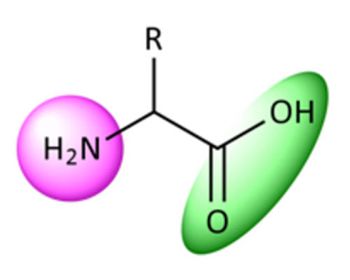
10 Ways to Break Your LC-MS
If there’s one mantra that’s essential for an LC (or GC)-MS operator it’s “contamination, contamination, contamination”. Keep contamination to a minimum and you’ll enjoy a reliable instrument; don’t take the necessary precautions and instead you’ll enjoy reaching for the vent switch and purchasing lots of spares.
If there’s one mantra that’s essential for an LC (or GC)–MS operator it’s “contamination, contamination, contamination”. Keep contamination to a minimum and you’ll enjoy a reliable instrument; don’t take the necessary precautions and instead you’ll enjoy reaching for the vent switch and purchasing lots of spares.
1) Not using a divert valve
A divert valve allows you to switch portions of the mobile phase to waste before the mass spectrometer. This is particularly important for the portion containing all the un-retained components – many of which are likely to be involatile and contaminate the source. If you really want to keep things clean use a divert valve to divert everything to waste except the compounds of interest.
2) Using involatile buffers
Some manufacturers have methods that claim to allow you to use phosphate and other involatile buffers with LC–MS instruments. Although theoretically this MAY be possible, try to avoid using phosphates and stick to the tried and tested volatile buffers we all know and love. Accumulation of involatile species not only blocks the sampling orifice – it also changes the voltages that are required by each electrostatic element of the source for optimum (or any!) ion generation.
3) Using too high a flow rate
Although many modern instruments allow you to use higher HPLC flow rates with electrospray, it’s still a good idea to use the traditionally optimal flow rate of 0.2–0.3 mL/min. Higher flow rates mean more mobile phase and, therefore, more contamination entering the source. Either use a post-column splitter or a narrower ID (ideally 2.1 mm) column, which allows higher mobile phase linear velocity (cm/sec) but limits the volumetric flow (mL/min.)
4) Too high a sample concentration
We’ve all done it – loaded a high concentration onto the column to bring up the sensitivity of smaller components. This also does a really good job of contaminating the source very quickly. If possible use a divert valve to divert all the concentrated material to waste. If you absolutely have to have the concentrated analyte going into the source (e.g. for checking for peak purity) try to limit the amount of injections you make.
5) Venting too frequently
Mass spectrometers are at their most reliable when they are left running. Venting the instrument increases wear and risks damage to many components. An expensive component particularly prone to damage through venting is the turbo pump which is designed to operate at high vacuum. When switching on the vacuum for the first time there is a rush of atmospheric air which places a high amount of strain on the turbo vanes and particularly the bearings. This greatly accelerates the wear on the turbo.
6) Not checking your rotary pump oil
It’s big, it’s heavy and it feels as solid as a tank. It can be easy to dismiss the rotary pump as being tough enough to not require any TLC from the user. These pumps consume small amounts of oil (lost as ‘mist’) in normal use and need regular topping up. In addition, a lot of the solvents and materials going through the MS end up dissolved in the rotary pump oil which degrade it and cause increased wear on the rotary pump components. The oil needs to be drained and changed at the recommended interval. For more frequent oil maintenance – some rotary (foreline) pumps allow the user to ‘ballast’ the pump to remove more volatile contaminants. This is usually simply achieved using a valve on the pump and should be carried out weekly in order to maintain the quality of the vacuum within the MS – and therefore the sensitivity of your instrument!
7) Running with a leak
Although most modern systems will alert you to any kind of air leak, even a small leak will increase wear on the vacuum and detector components. If you think there’s a leak, get it fixed ASAP.
8) Not re-assembling correctly
The more you have to disassemble the source for cleaning, the greater the chance of not only damaging some of the delicate components, but also for mis-assembly. We’ve probably all had to disassemble the source twice for the same fault after having installed a component incorrectly. Ensure that you follow your manufacturers guidelines – many of which can now be found online in video form (i.e. on YouTube!)
9) Running the source at too low a temperature
The source must be heated in order to evaporate the mobile phase and the temperature has to be matched to the flow rate (this is instrument dependent so consult your operating manual). Too low a temperature stops the spray evaporating and carrying mobile phase components to waste. Instead they get sprayed onto the source components and increase contamination.
10) Not running full scan during development
Just because we get a nice sharp single peak for our component in SIM / SRM, MRM doesn’t mean the chromatogram is clean – even when using advanced sample preparation methods such as solid phase extraction (SPE). Running an injection in full scan or with an inline diode array will show what’s really going on in the chromatogram. Don’t ignore this – it causes more contamination and quantitation issues than anything else. Take extra time developing your sample prep and chromatographic conditions. It will save you much more time and expense in the long run.
Newsletter
Join the global community of analytical scientists who trust LCGC for insights on the latest techniques, trends, and expert solutions in chromatography.




